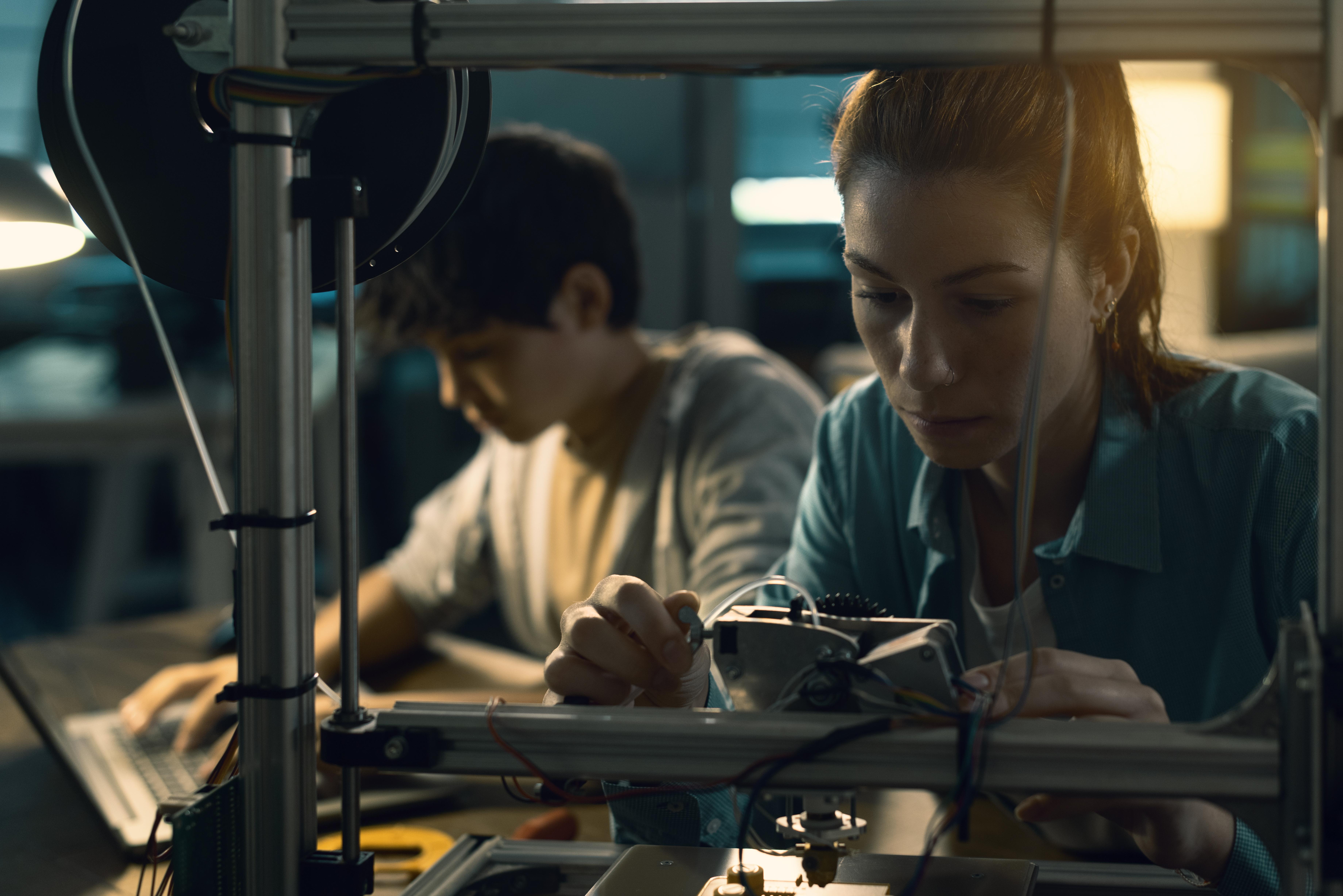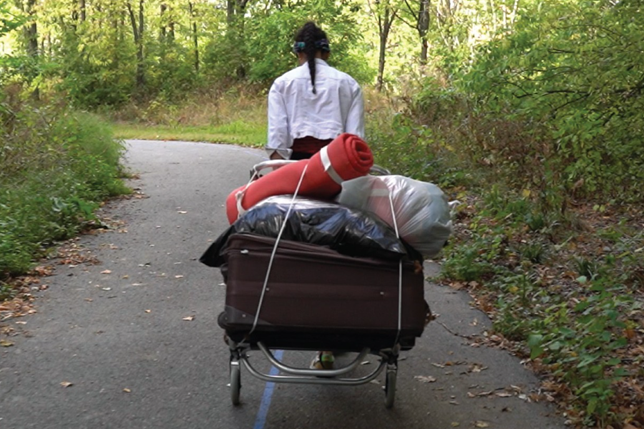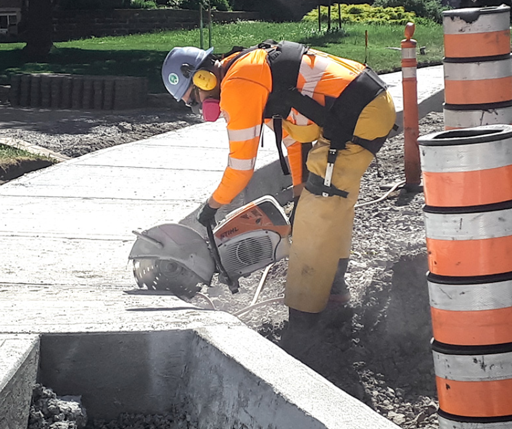In this non-stopping era, we've gotten familiar with concepts such as ground-breaking, trendy, and innovative. Creativity seems to be anywhere, and with it, innovation. All these big flashy concepts are part of our day-to-day vocabulary, and we have been using them without actually being able to define them.
In this particular article, we will dive into the concept of one of our core values: Innovation.
So, what does it mean?
Let's start with the most common place to find meaning: a dictionary. Either digital or printed, they are still our reliable source.
Innovation is derived from the Latin word in novare (into new). Innovation, simply put, has two meanings:
- A new idea, method or device.
- The introduction of something new.
With this in mind, we can say that innovation is the act of doing something different. However, innovation can also be seen as a mindset, a personality trait or a business promise. The problem with innovation is that it is entirely subjected to the interpretation each individual can give to that word based on their own beliefs or experiences.
This is why giving a compound definition of innovation represents a challenge itself. So, we choose a definition that resonates with us, as a company, and what we believe is innovation:
"Innovation is the oxygen that allows a company to live today while adapting to the future, so it can anticipate change and thrive on it."
- Patrick Gharzani, President of SBB Structures Inc.
How does innovation work?
There are several sources with different approaches to the innovation process. For example, according to the Center for Creative Leadership, you can break the innovation process into four stages:
- Clarify
- Ideate
- Develop
- Implement
On the other side, LEAD Innovation Management states that the innovation process can be divided into these four steps:
- Idea
- Concept
- Solution
- Market
However, other experts affirm the innovation process is made of 3 main steps:
- Make discoveries
- Develop ideas
- Commercialize products or services
No matter the source, we have found that all innovation processes start by exploring the potential solutions to the problems we want to tackle. In the first step, you and your team gather information about what is out there, what type of clients you wish to approach with these solutions, the potential operational and commercial challenges you might face, etc. This first stage is perfect for you and your team to practice a lot of brainstorming or open and in-depth discussions about the project.
Once expectations and data have been checked and digested, you can move forward to the second stage of the innovation process. You and your team are ready to conceptualize, refine, and select ideas.

You can start thinking of what materials the prototype should have at this stage, and which manufacturing processes are adequate. You can begin to polish the original idea based on how this can positively impact the potential clients and the possible risks you might find while developing this idea. You can start thinking about the budget and how you will provide/promote your product or solution to your potential clients.
Now that you have a clear vision of what you want to accomplish and the processes and materials you might need, you and your team are ready to develop the idea further. This stage is about prototypes, experimenting, testing, and collaboration.

The third stage is one of the hardest; it’s when the idea becomes reality and receives tons of feedback as part of the developing process. We say it is hard, especially for your team’s motivation. As a leader, remind your team of the purpose behind what they are doing. When a team works towards a common goal, the motivation comes back.
After all the blood, sweat and tears you and your team shared during the first three stages, it's time to implement or commercialize your idea. The main focus of this stage is to fine-tune your idea, service, product or solution according to the customer experience. Think of this stage as an ongoing process.
This is also the stage when the marketing and commercialization strategies kick in. Your marketing and commercial teams will gather the resources, define the channels and the processes to bring your innovative idea to your potential clients.
Many companies arrive at this stage without completing the other ones, leaving holes in their innovation process. Consequently, they discard potential good ideas that need a bit more time to succeed, or they invest in ideas that don't respond to the customer demand.

Where innovation meets excellence
As we mentioned at the beginning of this article, innovation is embedded in the DNA of SBB as one of its core values. So we live by it at all levels of the company.
Every time you see a new solution from SBB, keep in mind that we already went through the four stages mentioned above. Our team carefully and fearlessly curated every solution, process, and project.
In our journey to innovation with excellence, we have enjoyed working alongside people and companies with the same vision and passion for innovation.
Off the grid: Sébastien Brunelle-Jestin and Charles Couture-Lebrun believe physical training is an untapped energy source. They started their company with a clear goal: to reduce the ecological footprint of every workout! With this goal in mind, their team pushes the boundaries of technology while advocating for the daily use of renewable energy. For example, their eco-friendly spinning bikes convert users' energy into electricity. The latter is directly fed back into the network, reducing the building's energy consumption in real-time. We were pleased to support their vision by adapting their design from regular steel to aluminium, keeping quality and performance at heart.
Right now, their innovative spinning bike is destined for Gym Owners, schools and companies.

Phaneuf International: Alain Phaneuf is the captain of the innovative hockey solutions team: Phaneuf International. Their promise? Revolutionize arena operations by providing exceptional ice quality and a new, less expensive, more efficient and environmentally responsible operating model.
According to the industry, 80% of SST work accident risks in hockey arenas are linked to the numerous displacement of hockey and ringette goals by ice maintenance staff(s). This sparked an idea, and Alain approached us to produce a hockey goal made of aluminium that is equally resistant to a traditional one, but 50% lighter.
It all started as an idea, but we are now the manufacturer of Phaneuf International's 100% aluminium goals, proven to improve the working conditions of valuable employees and volunteers and the security of the hockey players in hockey arenas due to its lightweight structure. Furthermore, Phaneuf International's goals have a much longer lifespan than traditional goals, contributing to the sustainable development of communities

CartBed by Alejandrina Hernandez: Moved by pure altruism and empathy, Alejandrina Hernandez, a graduated Technical Industrial Designer from Dawson College, created a Cart/Bed to help migrants, referred to as "Caminantes", who walk long distances and risky paths searching for a better life under the most unimaginable conditions.
She presented the CartBed to several media outlets; she was then contacted by one of the representatives of the AluQuebec Association. Encouraged by Petrino Buzatu (Project Advisor), Michael Santella (Dawson College Teacher and Alejandrina's Tutor) and the engineers of AluQuebec, she decided to bring that idea into reality by creating a prototype.
AluQuebec contacted us, and we fell in love with Alejandrina's project, so we decided to support her. She worked with us to turn her design into a practical aluminium prototype. Why aluminium? Aluminium is equally resistant to steel, doesn't rust, and is lightweight. If we take the aluminium properties and consider the challenges these "Caminantes" face, we find Alejandrina's design in aluminium is the perfect match.
The project is still in the development stage, but we are confident that Alejandrina will successfully change the current situation of the "Caminantes".

Biolift: Laurent Blanchet, Samuel Lecours, Mathieu Ramananarivo and Guillaume Gaudet had the health and safety of industrial and construction workers at heart. In order to respond to these issues, they founded Biolift, a company with one vision: to build a world where manual jobs are no longer done at the expense of workers' physical health.
The Biolift team created an exoskeleton that uses compressed air springs. The system stores the body's mechanical energy when the workers bend their back and redistributes it when they stand up. By supporting up to 20KG, the exoskeleton relieves their back to prevent injury and fatigue.
Our contribution relies on recommending lightweight materials and manufacturing some pieces for their exoskeleton. Working alongside them has been an eye-opening experience to the challenges industrial workers face every day.

Our team continues to develop multipurpose solutions, such as emergency towers and flood protection systems, in addition to collaborating on these outstanding projects. The future looks full of opportunities and solutions waiting to be discovered by our research and development team.
We are passionate about creating solutions, supporting and betting on dreams, being challenged and thriving during difficult times, and getting excited by developing and proposing fearlessly multipurpose solutions. Our team is full of experts who share a common view: Excel and innovate with courage in the industry of the future.
Do you dare to innovate with us? Click here.


